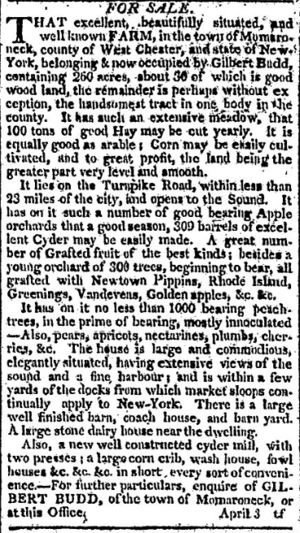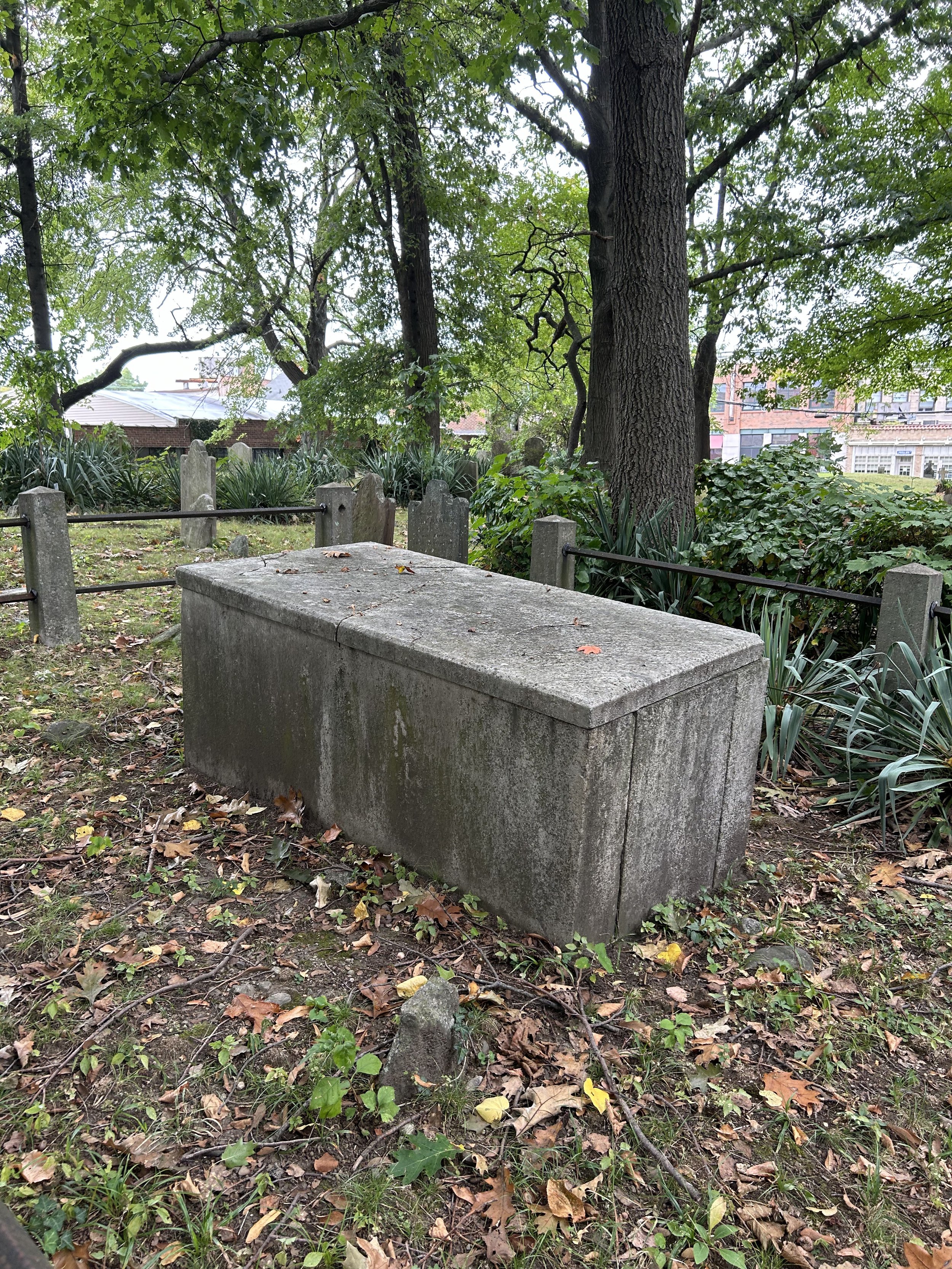Old Town Burial Ground
338 Mt Pleasant Ave, Mamaroneck
Gilbert Budd's Farn

Gilbert Budd (1744-1813), one of the largest enslavers in Mamaroneck, once owned property here. Once part of Gilbert Budd’s farm, the Old Town of Mamaroneck Burial Ground is steeped in history. Budd was a veteran of the American Revolution’s Continental Army. His service for the colonies was notable, as most men in Mamaroneck during that time were Loyalists. During his time in Mamaroneck, Budd served as the Town Clerk and Town Supervisor of Mamaroneck Township.
Life on The Farm

Budd purchased the farm from John Thomas on August 8, 1785, for $952 after winning the bid. The property was originally divided into two areas: Hadley Farm (62 acres) and Homestead Farm (182 acres). At the time of purchase, the land boasted pear, apricot, and nectarine orchards, along with a barn, coach house, dairy house, and more.
Present Day
Eventually, the farmland was turned into a cemetery for Mamaroneck citizens. Towards the back end of the cemetery lies a large rectangular tomb (shown below), most likely marking the graves of the Budd family. Although the tomb was once believed to hold the remains of the Budds, it is now empty. Local sources believe that the bones were either stolen by vandals or buried beneath the tomb.
Gilbert Budd and Enslavement

Gilbert Budd, despite his role in the Revolution, was also one of Mamaroneck’s largest slaveholders between 1790 and 1810.
On July 4, 1799, New York State passed “An Act for the Gradual Abolition of Slavery” that ensured that all children born after that date would be free after their “productive years.” After this act, Mamaroneck began to keep records of the names of those born after 1799. Prior to this, the enslaved people in Mamaroneck were registered under numbers in the census.
Census records list several enslaved people under Budd’s ownership, including Susannah, Jack, Bet, Phebe, Daniel, Hannah, Henry, Peter, Peter Jr., Sarah, Charles, Hannibal, Jack Purdy, and Eliza. & Township records; explain why babies are in the township records (gradual emancipation law requirement).
On March 17, 1802, one of Budd’s enslaved workers, a woman named Bet, gave birth to her son Peter. The father of Peter was Jack Purdy, an enslaved man owned by John DeLancey. Bet later had a daughter named Eliza in 1809.
